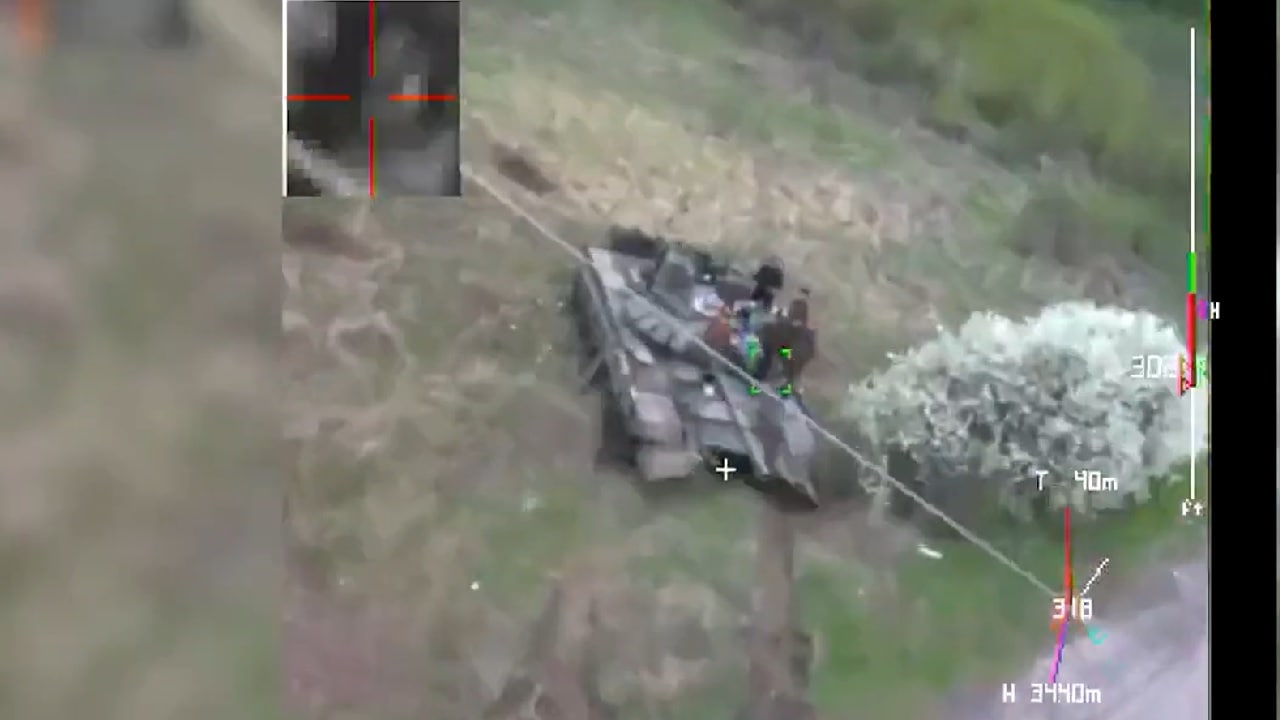The Switchblade drone has been called a ‘game changer’ in the Ukraine war.
This UAV can loiter and has been called a ‘Kamikaze’ drone.
And video on how much damage it can do is all over social media:
What we know: Drones have taken center stage in the now one-year-long invasion of Ukraine by Russian Forces.
While Moscow has largely turned to its fellow authoritarian regimes to comprise and replenish its UAV stockpile, Ukraine has relied primarily on Western and Turkish combat drones.
Following a recent influx of Iranian-made Shahed-136 combat drones to Russia’s armed forces, Ukrainian officials believe a spike in drone warfare has arrived.
An adviser to Ukraine’s Minister of Internal Affairs told Newsweek earlier in the year that in order for the country’s defense efforts to be successful, additional drones are necessary.
Although the U.S. and other NATO allies have recently supplied Kyiv with military equipment including M1 Abrams tanks, Javelin anti-tank missile launchers and other ammunition, Ukrainian Forces are really hoping for more UAVs.
In addition to the low cost of drones, these weapons allow Ukraine to destroy Russian Forces “at large distances without entering direct combat contact.”
While Ukraine’s defenses are eyeing a variety of lethal UAVs, the American-made Switchblade loitering drone stands out.
Switchblade: An overview of the powerful drone
Often referred to as a “kamikaze” craft, the AeroVironment Switchblade combat drone has played a significant role in the ongoing conflict in Ukraine.
Tiny enough to fit into a backpack, the loitering munition can be launched from a tube in essentially any location.
The entire weapon, including its launcher, payload and transport bag, weighs roughly five and a half pounds.
The weapon was initially conceptualized by the U.S. Air Force Special Operations Command to aid American troops’ responses to enemy ambushes in Afghanistan.
This human-carried weapon is cheaper, and more maneuverable for troops in rough terrain to use compared to calling in air-support.
Unlike helicopters or other airframes often called in to provide air support for troops on the ground, the Switchblade can function in urban areas at a quick pace.
Both Switchblade variants possess unique capabilities
Although the Switchblade 300 has a shorter range of six miles, it can cruise at a maximum speed of 100 miles per hour.
This smaller variant is an effective tool in taking out personnel targets. The larger Switchblade 600 variant is more effective in taking out armored targets, including main battle tanks since it possesses a longer range and endurance than the 300 variant.
However, unlike its tiny cousin, the Switchblade 600 weighs more than 120 pounds.
Ukrainian defenses have put the UAV to good use
The U.S. sent over 100 Switchblade drones to Ukraine as part of the Biden administrations initial $800 million weapons package during the early months of the invasion.
Since then, various video footage of Switchblade 300s attacking Russian personnel has widely circulated on social media.
Ukrainian Special Forces released a video back in February depicting a 300 drone striking a Russian T-72B3 battle tank. While the payload was too small to damage the armored vehicle, the crew members standing atop the tank were killed or critically injured.
#Ukraine: Ukrainian SSO (SOF) published rare footage of a kamikaze drone in action, which we identied as a US-supplied Switchblade 300 – hitting a Russian T-72B3 tank with its crew on top.
The tank is unlikely to receive any serious damage, which cannot be said about the crew. pic.twitter.com/sRm5GQNRyL— ???????? Ukraine Weapons Tracker (@UAWeapons) May 24, 2022
The tactic of using a less-explosive drone is strategic- since Ukrainian forces could re-possess vulnerable Russian tanks as their own following attacks.
The White House has denied sending over the Switchblade 600 and other more advanced lethal drones in the past due to fears of escalating the conflict.
However, now that Moscow is armed to the teeth with Iranian-made loitering munitions, additional Switchblades may be necessary to maintain Ukraine’s defensive efforts.
Maya Carlin is a Middle East Defense Editor with 19FortyFive. She is also an analyst with the Center for Security Policy and a former Anna Sobol Levy Fellow at IDC Herzliya in Israel. She has by-lines in many publications, including The National Interest, Jerusalem Post, and Times of Israel.

